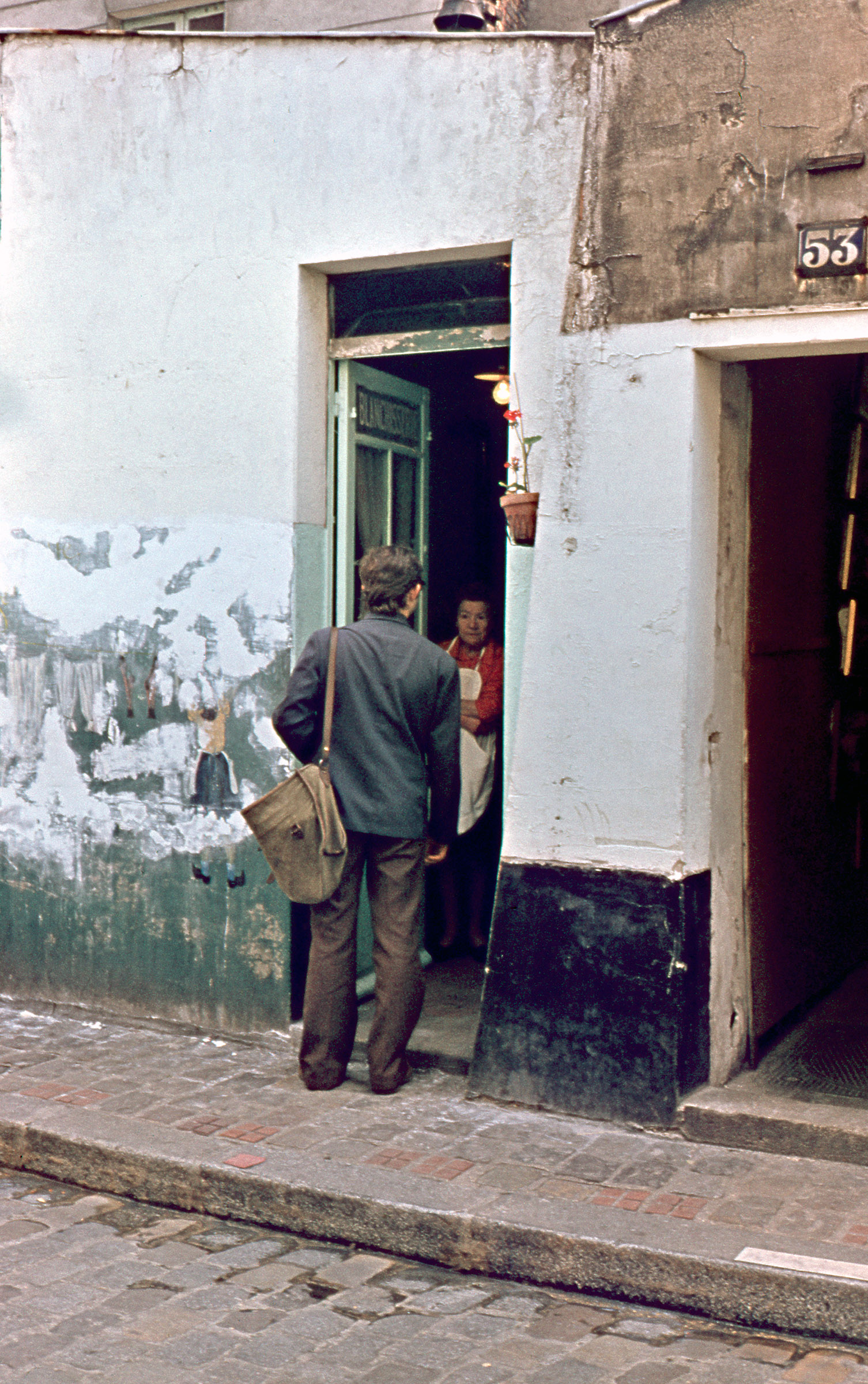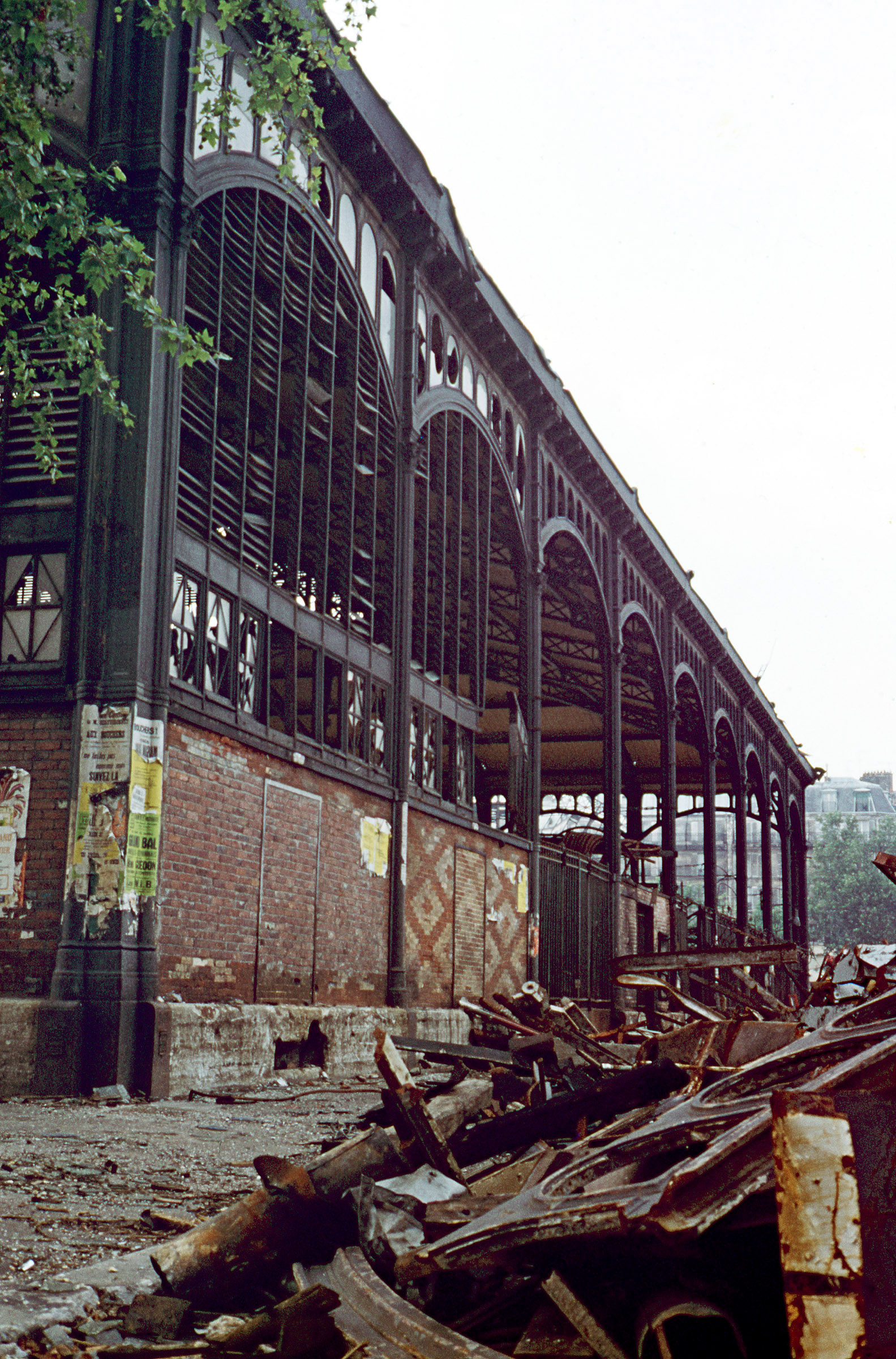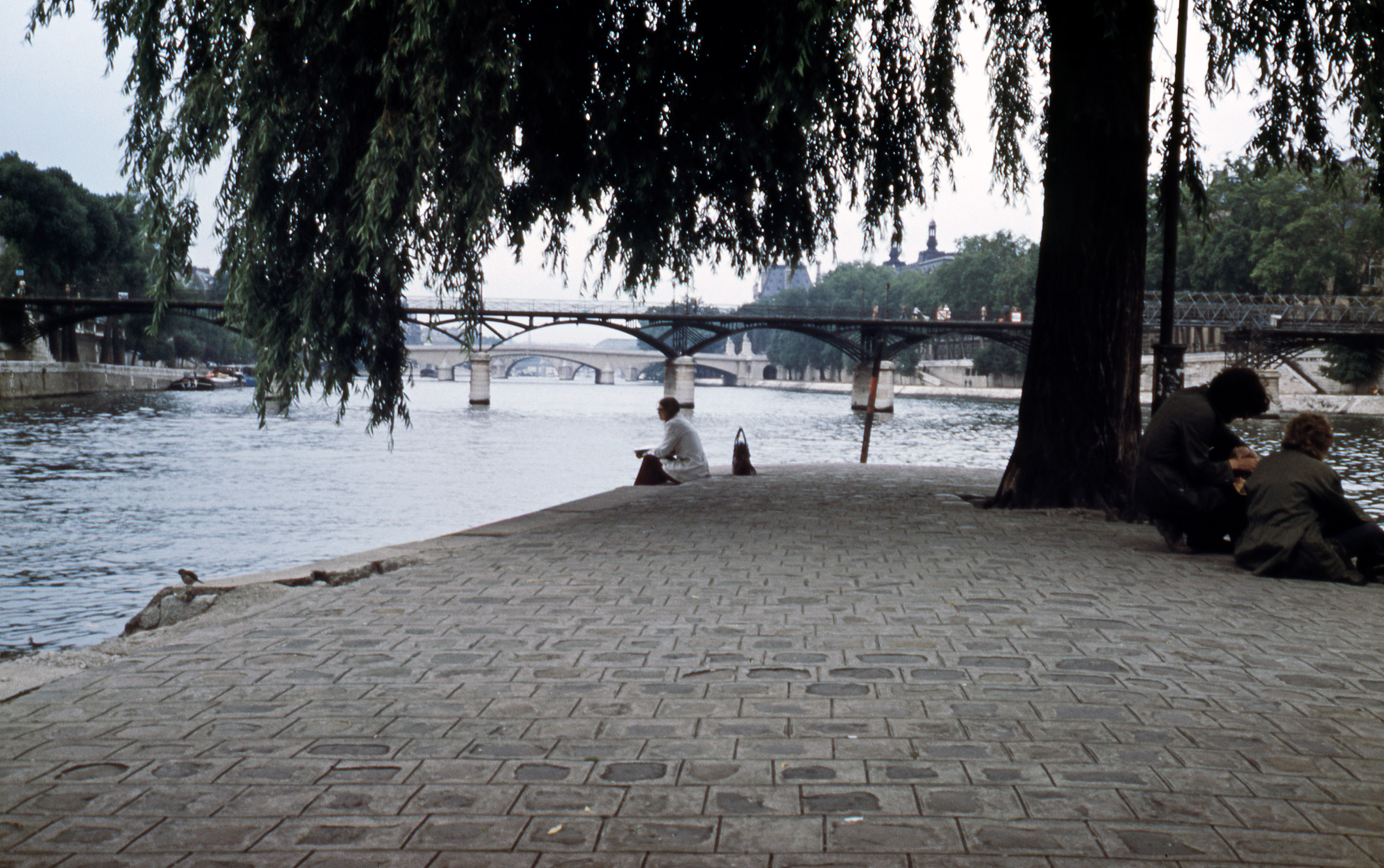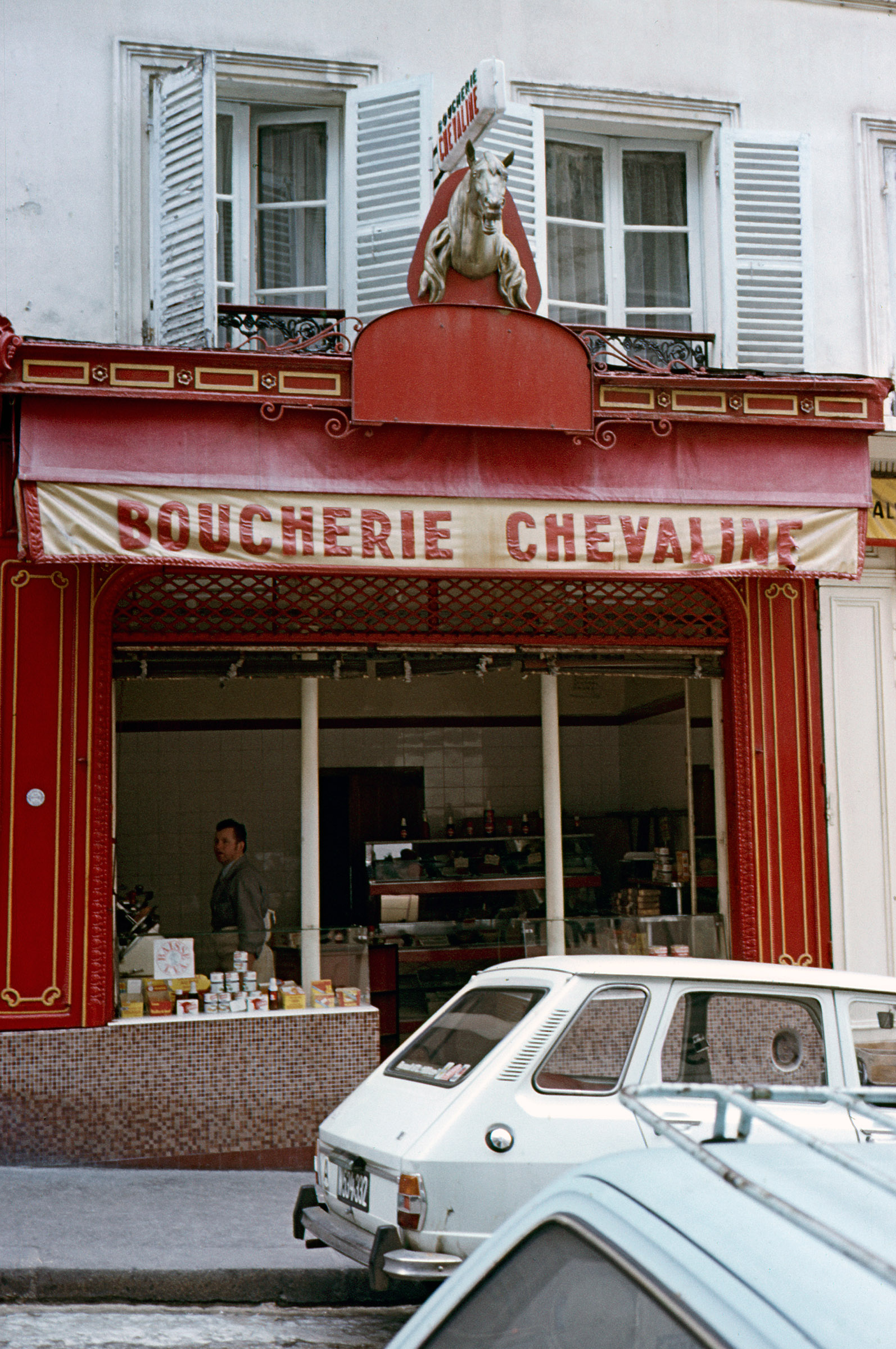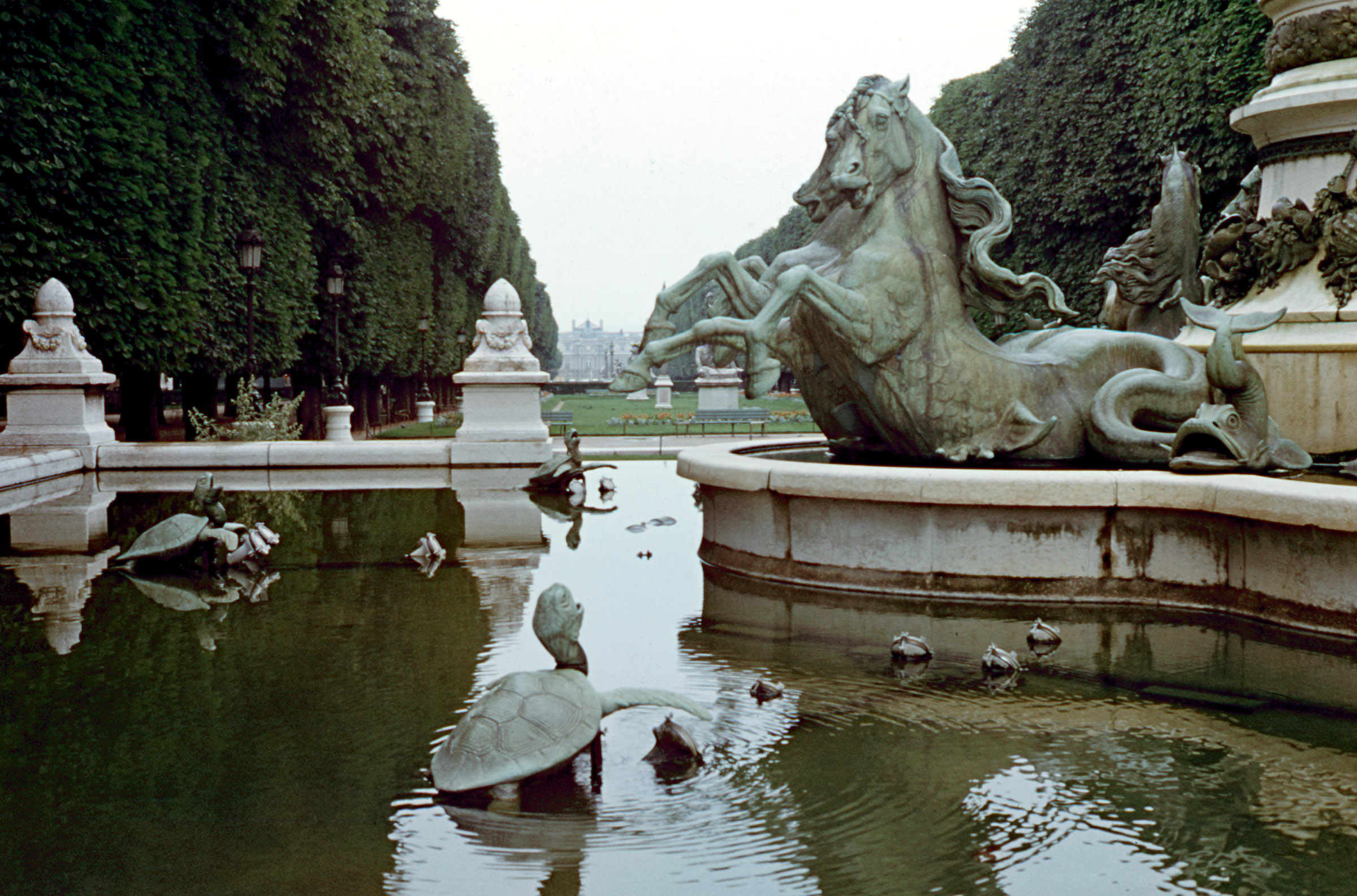A busy scene on the River Hull, probably taken in 1981, though the dates on these images come from the album they are filed in and are sometimes not the exact year, and this could possibly have been made earlier.
The slide mount crops the image slightly and I’m sure that the actual transparency will have included the top of the water tank on the Croda silo at the Isis Oil Mills, but it would have greatly slowed down the photographing of this and the other slides to have removed the slides from their mounts – and would have made handling them much more tricky. And the macro lens and bellows combination I was using with the older Nikon slide holder was fine for mounted slides but could not give proper coverage of the full 24x36mm.
Perhaps because of the problem of slide mounts, many SLR cameras, though marketing on the benefits of actually viewing through the taking lens rather than the separate optics of the rangefinder Leica or twin-lens Rolleiflex had viewfinders that cropped the images and were actually less accurate in their framing than the Leica. Though even the Leica white line frames never quite exactly represented the area that would appear on film (though some lenses came very close) making something of a nonsense the insistence of many photographers of printing the edges of the negative to give a black frame because this represented how they had seen the picture when they pressed the button. It was always more an aesthetic decision.
The silo was still there last time I walked along Bankside, but the location from where I took this picture was behind a locked gate and the buildings to the right of the silo had gone and there was only one vessel, Cargill’s edible oil tanker Swinderby, moored along this reach of the river.
I can’t remember now where I took this picture of a wharf across the RIver Hull, somewhere in Hull. But I do remember being attracted by what appears to have been built as an incredibly tall doorway, though it does now appear to have been blocked by a pipe that emerges through it at a little under half its height.
Was it, I mused, made for giraffes?
Hull Corporation was one of 55 local authorities to bid for a licence to provide telephone services in their local area in 1902 and opened its first telephone exchange in a former public baths two years later. While other local authorities who had been granted licences soon abandoned or failed, Hull continued its service after the Postmaster General had gained a monopoly elsewhere across the country.
And when in 1936 the Post Office launched a new red phone box designed by Sir Giles Gilbert Scott to commemorate the Silver Jubilee of King George V and decided that all phone boxes across the country should be red, Hull decided while adopting the new design to keep their traditional colour of cream and green, eventually moving to all cream. Hull City Telephone Department continued to innovate – and introduced a message from Santa in 1952. The council hived off the service into a fully owned separate company, Kingston Communications (HULL) PLC in 1987, which was floated on the Stock Exchange in 1999. In 2007 Hull Council sold its remaining stake in the business which changed its name to KCOM Group PLC.
The scene on Hessle Rd is still recognisable, but the shop has changed and no longer has the colour scheme and awning that attracted my attention, and although there is still a phone box I think it may have moved a few feet.
The paddle steamer Lincoln Castle was now beached on the Humber foreshore at Hessle, close to the Humber Bridge, and was now a restaurant where we went for afternoon tea. I made it into a rather strange landscape of distant jagged hills in this picture.
And of course we went across the Humber Bridge which took us to Barton-on-Humber. Where we walked around a bit and found there wasn’t a great deal there. I took a few photographs, mainly of the Humber Bridge, and I rather like this almost monochrome view.
More pictures on Flickr in Hull Colour 1972-85.
All photographs on this and my other sites, unless otherwise stated, are taken by and copyright of Peter Marshall, and are available for reproduction or can be bought as prints.











